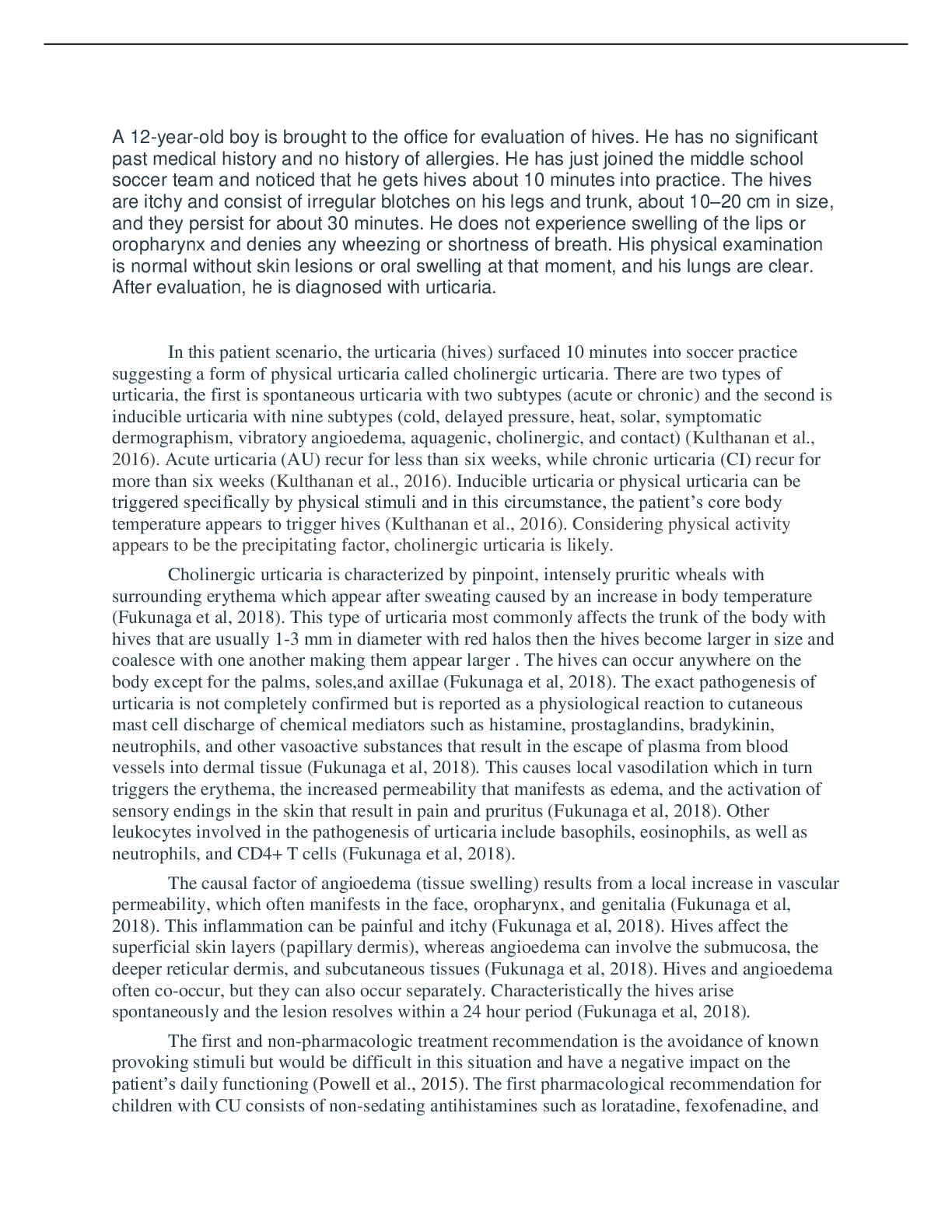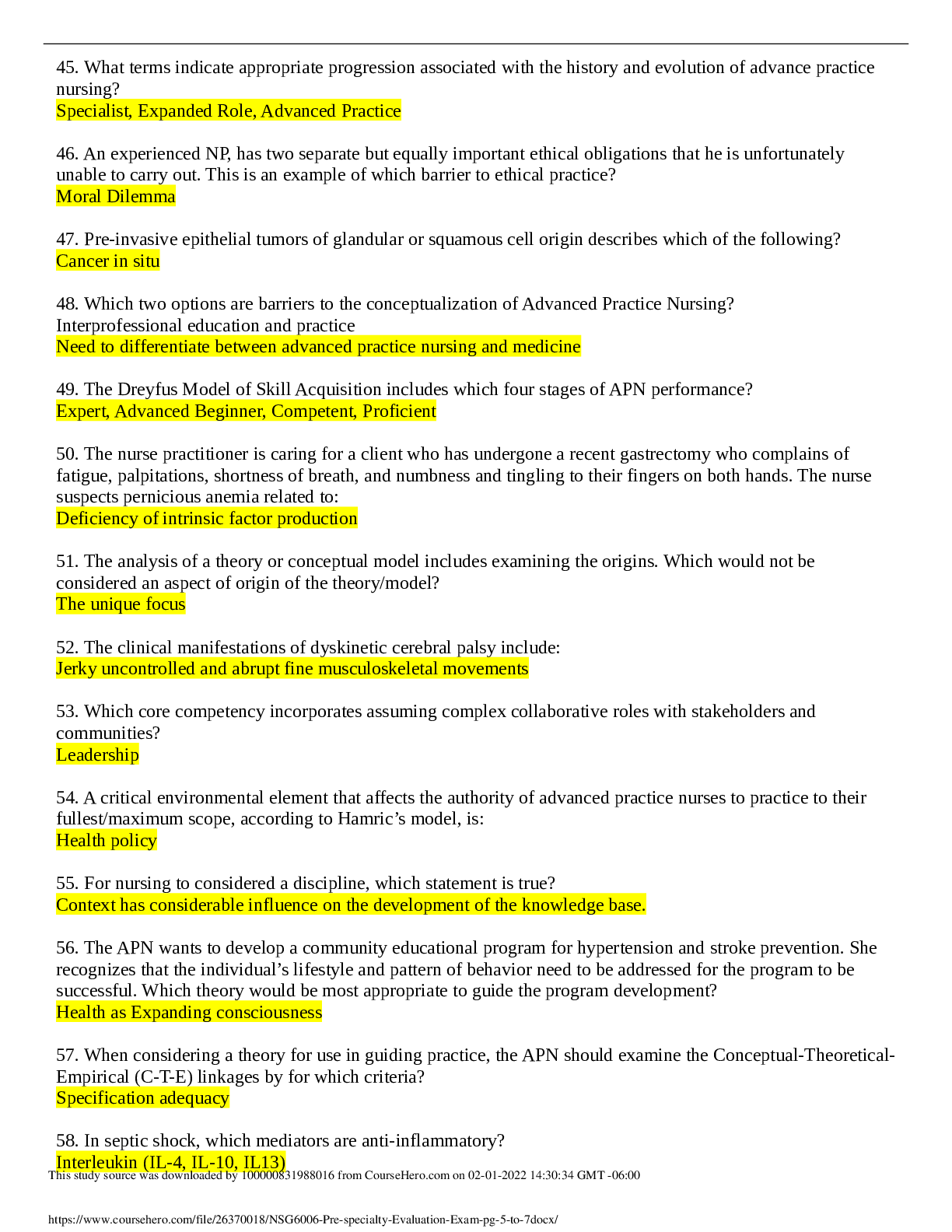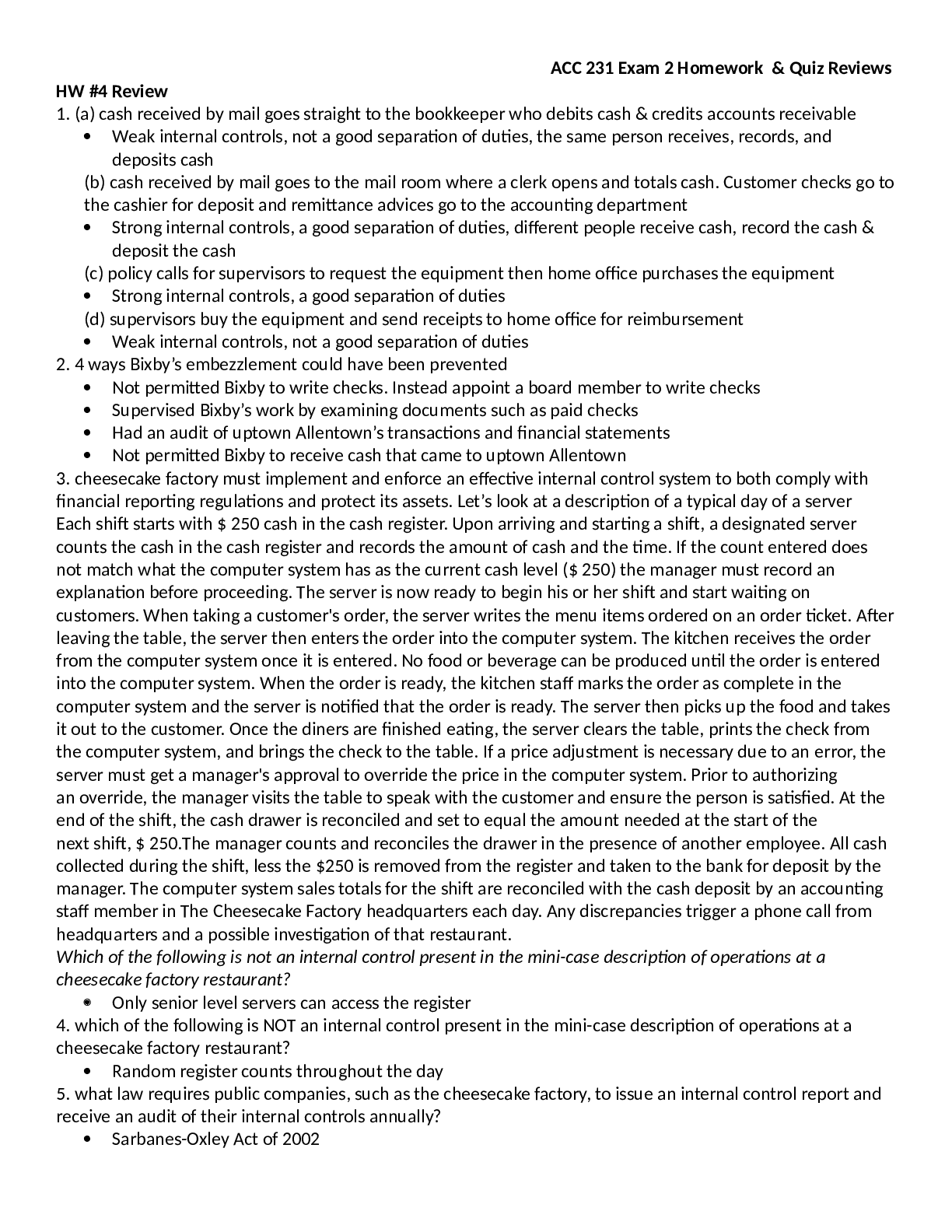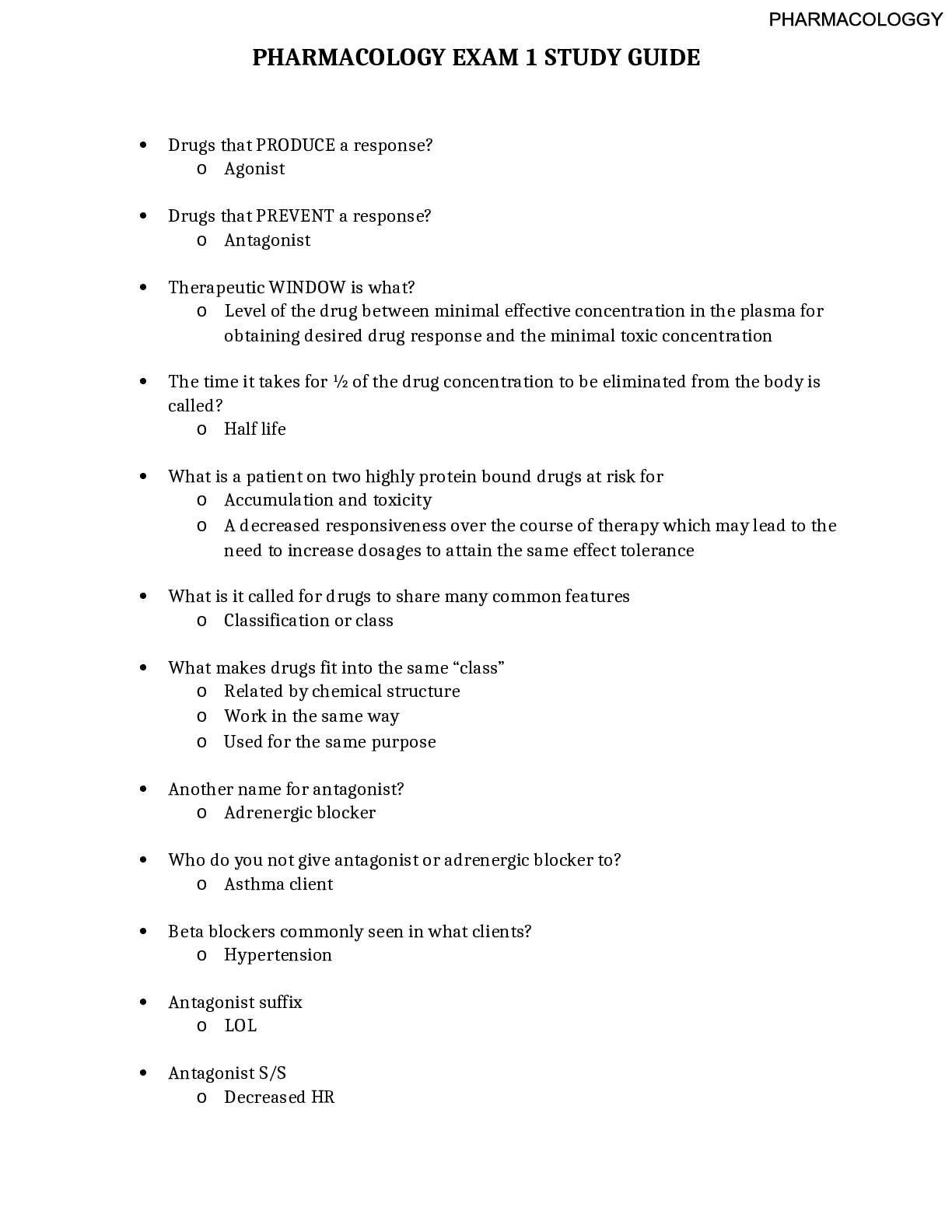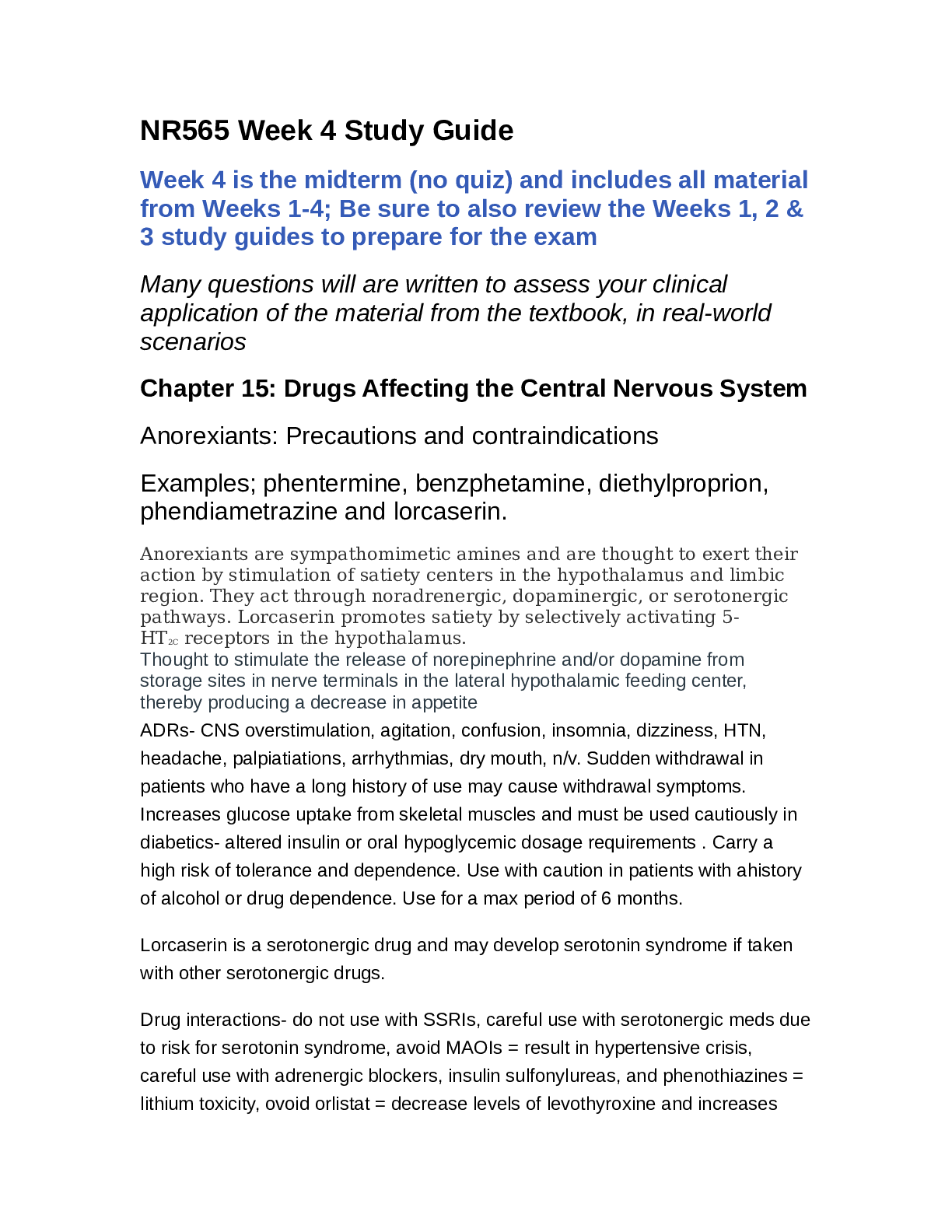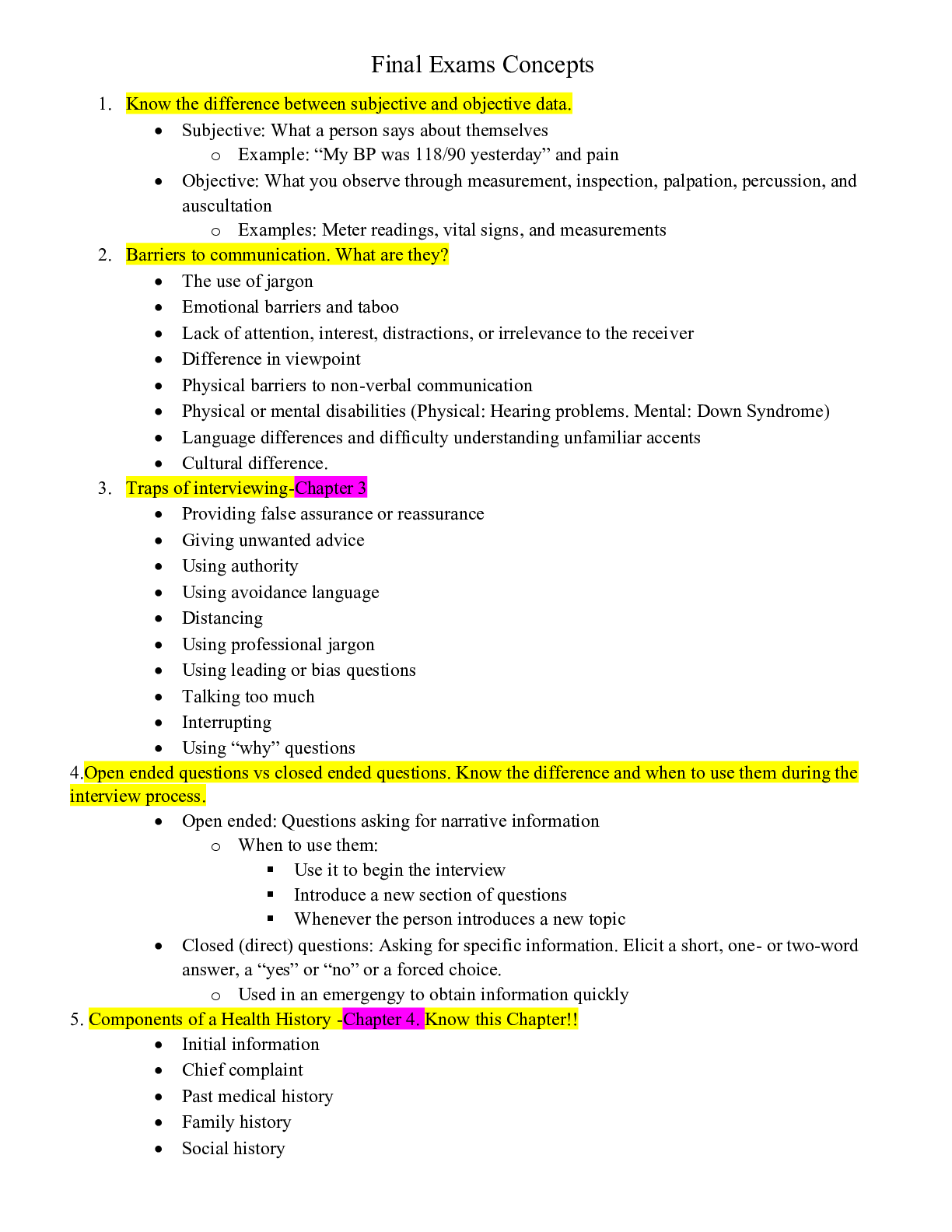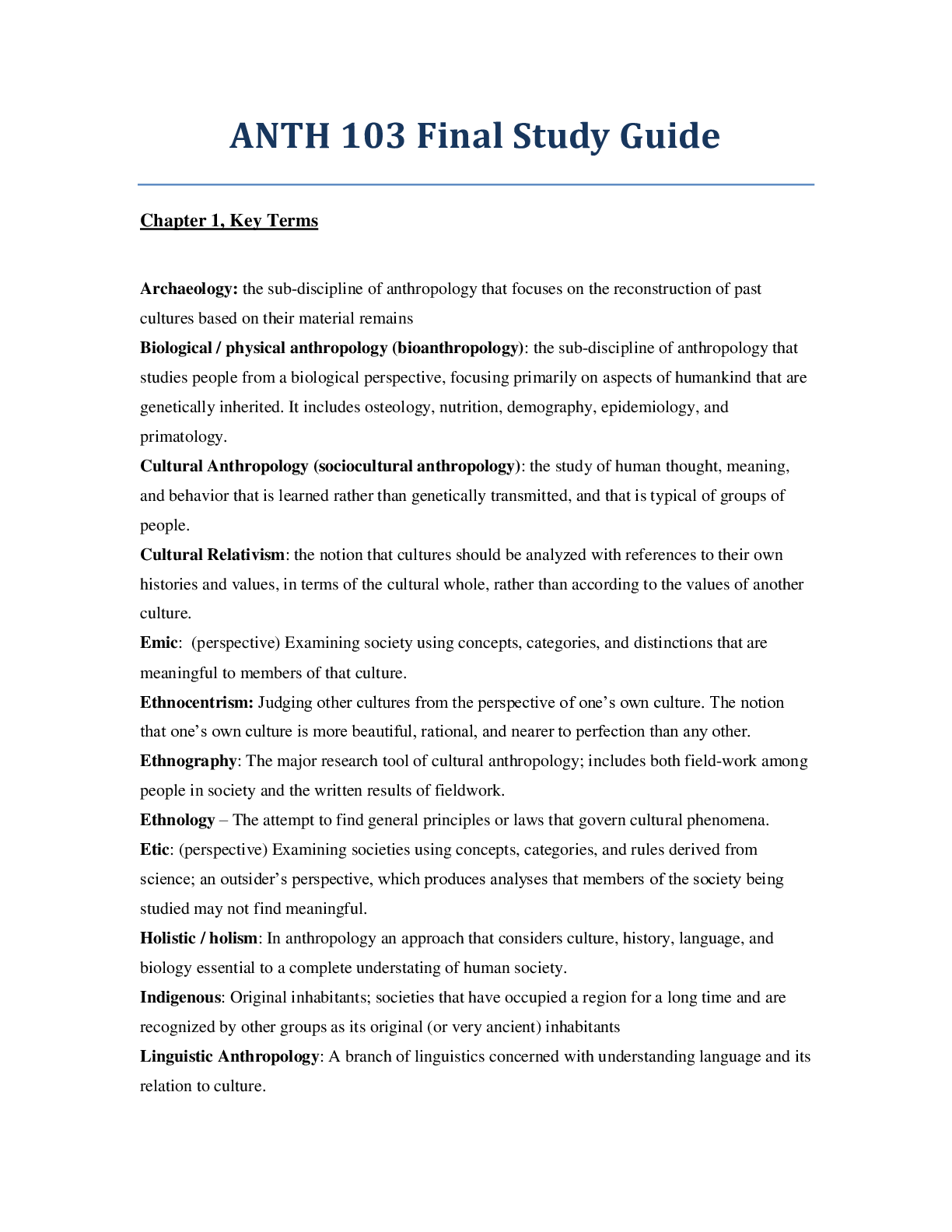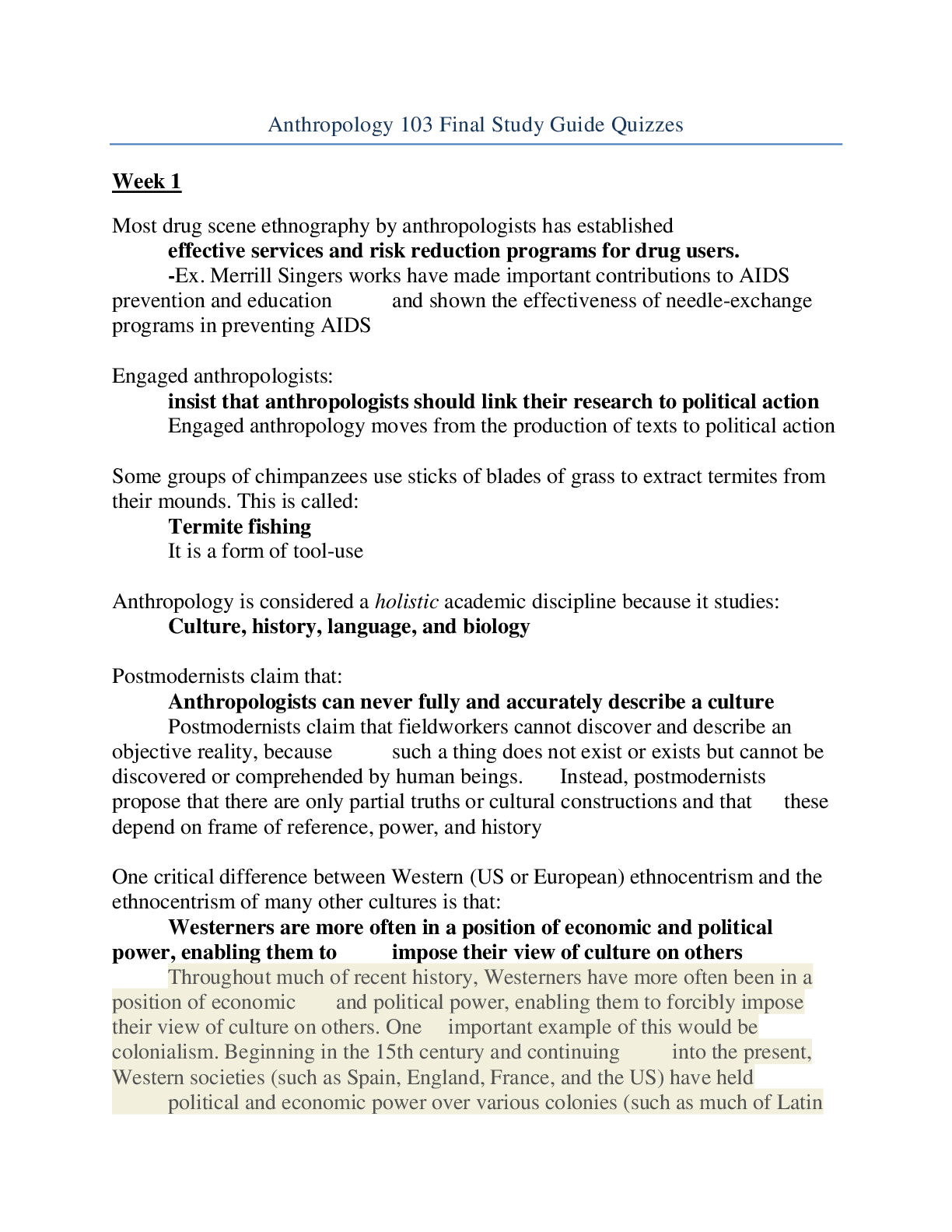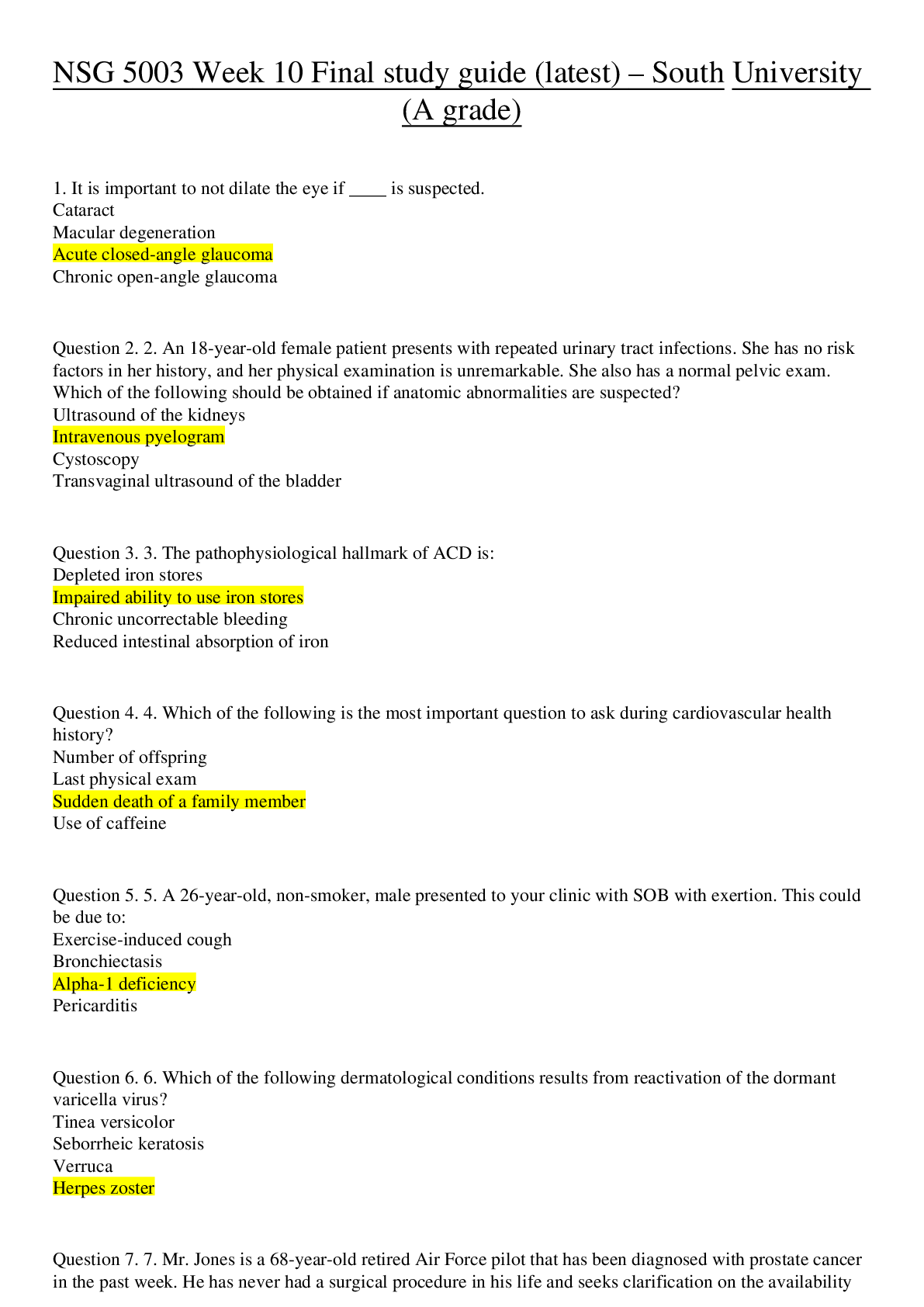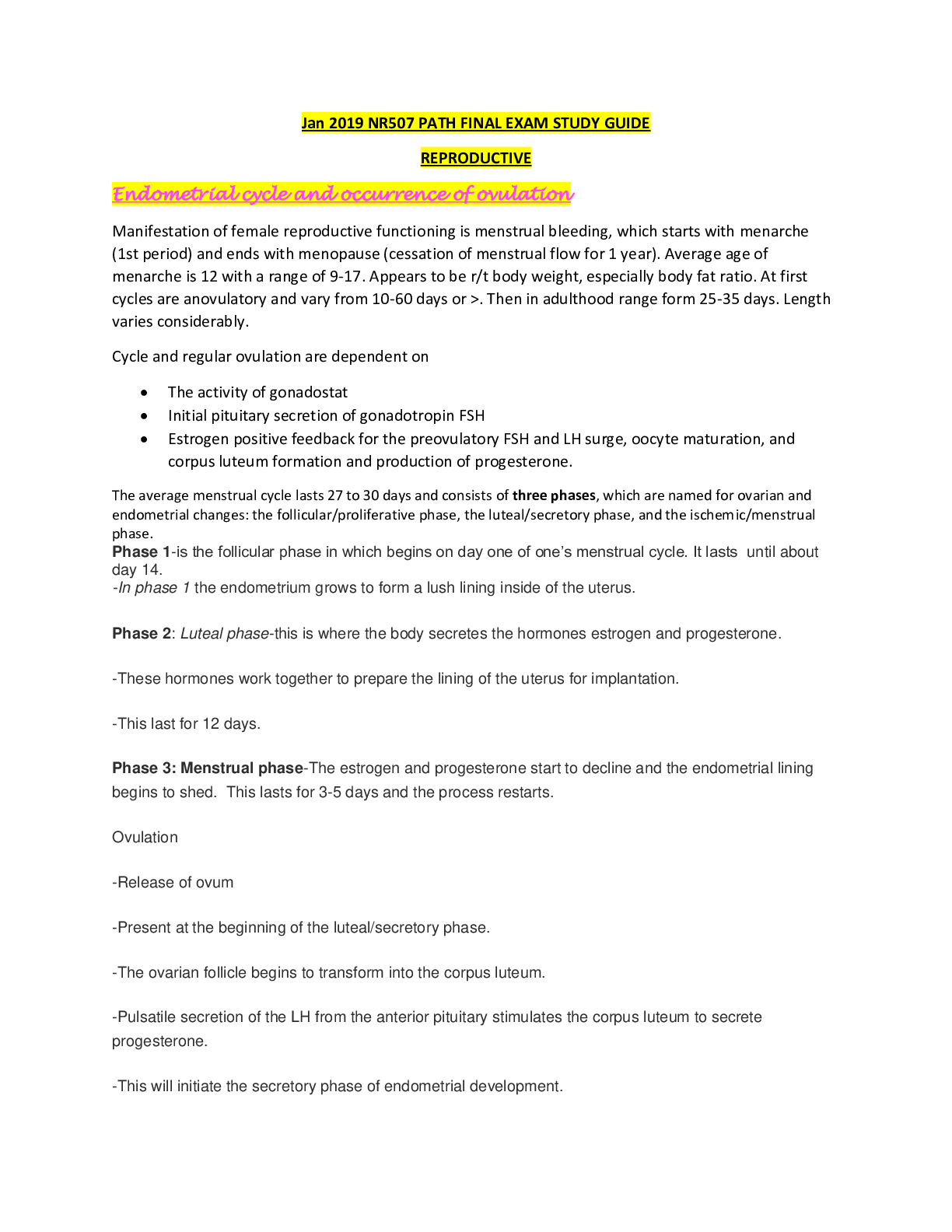*NURSING > STUDY GUIDE > NR 507 Final Study Guide ALL TOPICS COVERED CORRECT AND GRADED A+ *ACE IT (All)
NR 507 Final Study Guide ALL TOPICS COVERED CORRECT AND GRADED A+ *ACE IT
Document Content and Description Below
Final Study Guide Reproductive: o Endometrial cycle (menstrual cycle) and the occurrence of ovulation During menstruation (menses), the functional layer if endometrium disintegrates and i... s discharges through the vagina. Follicular/proliferative phase - GnRH and a balance between activin and inhibin from the granulosa cells contribute to the rise of FSH levels, which stimulates a number of follicles. The pulsatile secretion of FSH from the anterior pituitary gland rescues a dominant ovarian follicle from apoptosis by days 5 to 7 days of the cycle. Together estrogen and FSH increase FSH receptors in the granulosa cells of the primary follicle, making them more sensitive to FSH. FSH and estrogen combine to induce production of LH receptors on the granulosa cells of the primary follicle, thus promoting LH stimulation to combine with FSH stimulation, causing more rapid secretion of follicular estrogen. As estrogen levels increase, FSH levels drop because of an increase in inhibin-B secreted by the granulosa cells in the dominant follicle. This drop in FSH level decreases the growth of the less-developed follicles. Estrogen causes cells of the endometrium to proliferate and stimulates production of LH. Luteal/secretory phase – ovulation marks the beginning of this phase. The ovarian follicle begins its transformation into a corpus luteum. Pulsatile secretion of LH from the anterior pituitary stimulates the corpus luteum to secrete progesterone, which in turn initiates the secretory phase of endometrial development. Glands and blood vessels in the endometrium branch and curl throughout the functional layer, and the glands begin to secrete a thin glycogencontaining fluid, the secretory phase. If conception occurs, the nutrient-laden endometrium is ready for implantation. Human chorionic gonadotropin (HCG) is secreted 3 days after fertilization by blastocytes and maintains the corpus luteum once implantation occurs at about day 6 or 7. HCG can be detected in maternal blood and urine 8 to 10 days after ovulation. Ischemic/menstrual phase The production of estrogen and progesterone continues until the placenta can adequately maintain hormonal production. If conception and implantation do not occur, the corpus luteum degenerates and ceases production of progesterone and estrogen. Without progesterone or estrogen to maintain it, the endometrium becomes ischemic and disintegrates. Menstruation then occurs marking the beginning of another cycle. Ovulatory cycles appear to have a minimum length of 24 to 26.5 days: the primary ovarian follicle requires 10 to 12.5 days to develop, and the luteal phase appears relatively fixed at 14 days (+/- 3 days). Menstrual blood flow usually lasts 3-7 days, but it may last as long as 8 days or stop after 1 to 2 days and still be considered within normal limits. Ovulation – the release of an ovum from a mature follicle and marks the beginning of the luteal/secretory phase. o Uterine prolapse Descent of the cervix or entire uterus into the vaginal canal. In severe cases, the uterus falls completely through the vagina and protrudes from the introitus. Symptoms of other pelvic floor disorders also may be present. Urinary: sensation of incomplete emptying of the bladder, urinary incontinence, urinary frequency/urgency, bladder “splinting” to accomplish voiding Bowel: constipation or feeling of rectal fullness or blockage, difficult defecation, stool or flatus incontinence Urgency: manual “splinting” of posterior vaginal wall to accomplish defecation Pain & Bulging: vaginal, bladder, rectum; pelvic pressure, bulging, pain, lower back pain Sexual: dyspareunia, decreased sensation, lubrication, arousal Tx: Kegel exercises Estrogen to improve tone and vascularity of fascial support Pessary Weight loss Avoidance of constipation o Polycystic ovarian syndrome Most common cause of anovulation and ovulatory dysfunction in women. Defined as having at least two of the following three features: irregular ovulation, elevated levels of androgens [Show More]
Last updated: 1 year ago
Preview 1 out of 34 pages
Instant download
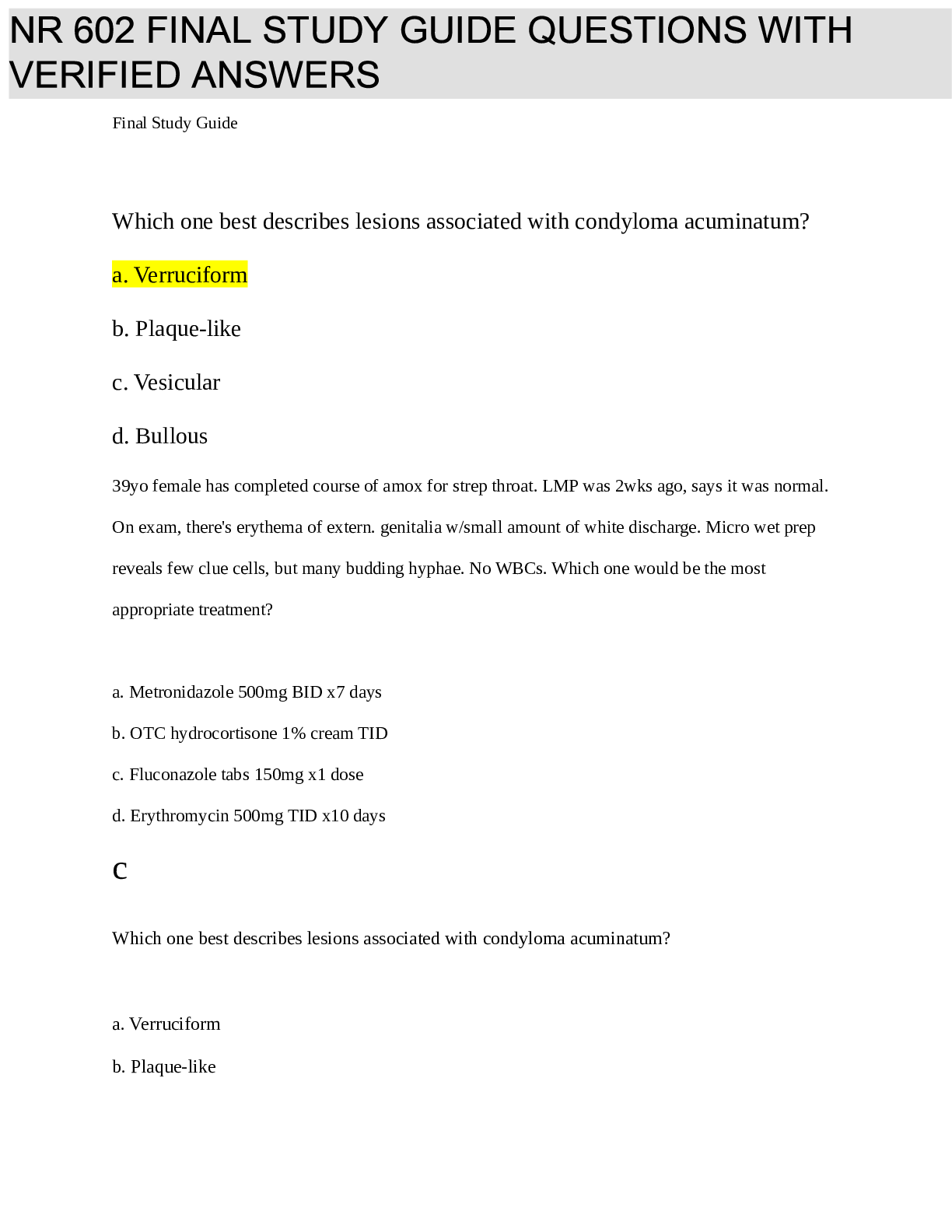
Buy this document to get the full access instantly
Instant Download Access after purchase
Add to cartInstant download
Reviews( 0 )
Document information
Connected school, study & course
About the document
Uploaded On
Mar 22, 2022
Number of pages
34
Written in
Additional information
This document has been written for:
Uploaded
Mar 22, 2022
Downloads
0
Views
90



